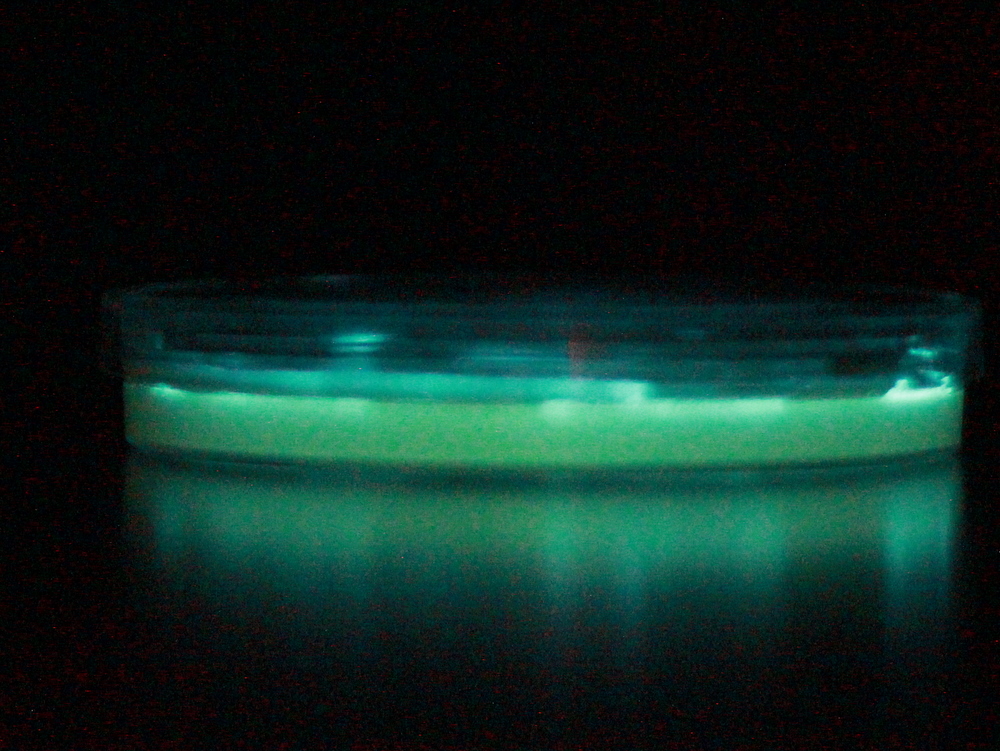Team:Cambridge/Bioluminescence/Bacterial Luciferases
From 2010.igem.org

Project Vibrio: Introduction
Project Vibrio was designed to complement Project Firefly and to create BioBricks from genes involved in bacterial bioluminescence.
Bioluminescent bacteria in nature
Our work
We wanted to use lux operons to do what had been impossible with firefly luciferases:
- Emission of blue light to complete our spectrum of emission wavelengths.
- Substrate production within E. coli, avoiding the need for addition of external substrates, such as luciferin.
Lux operons are found in the genomes of a range of natural bioluminescent bacteria and encode five enzymes involved in the light-generating pathway.
- luxA and luxB form the luciferase of the system, which causes the emission of light when acting on the substrate tetradecanal.
- luxC, luxD and luxE are involved in the biosynthesis of tetradecanal from readily available substrates.
In nature, the lux genes appear to be repressed by the nucleoid protein, H-NS, and occur under quorum sensing control.
 "
"
